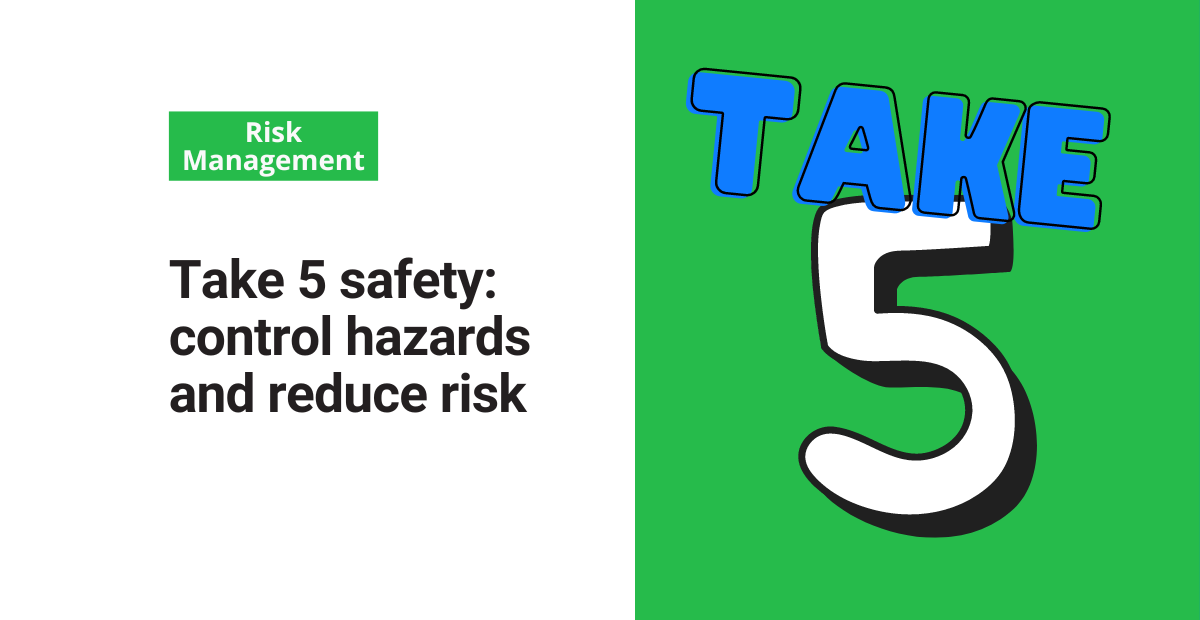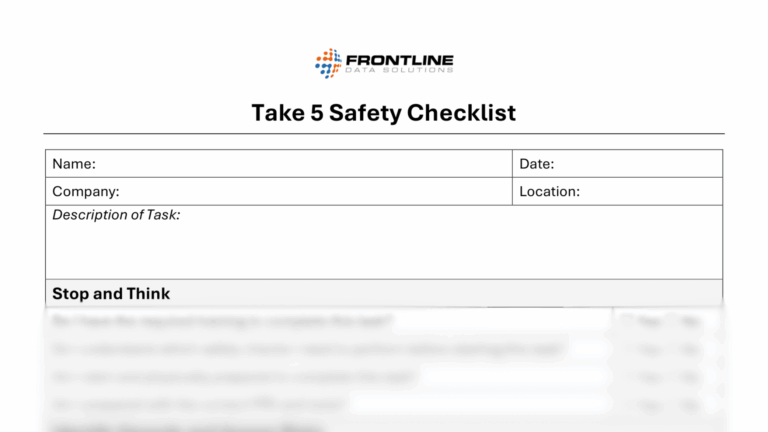If you want to take a more proactive approach to incident management, consider adopting the take 5 safety method.
It’s a simple system for identifying and controlling hazards before you start work on a task or a project. Because this process happens before work activities, it promotes the sort of forward-thinking attitude that helps to eliminate hazard risks.
It does this by encouraging workers to pause and reflect on their surroundings and the variables within a process. This heightened sense of awareness is a powerful tool against injuries, illnesses, and property damage.
Free checklist!
Use this template to implement the take 5 safety method at your company.
What is take 5 safety?
The take 5 safety process is exactly what it sounds like: a five-minute, five-step process for assessing a work task and ensuring that all hazards within that task are under control.
The five steps in this approach include:
1. Stop and think about the task you’re about to do and ensure that you’re qualified to do it safely.
2. Identify hazards within the environment and the task itself.
3. Assess the risks related to the process and give each hazard a risk rating.
4. Control the hazards with additional safety measures that reduce the overall risk rating.
5. Monitor the hazards continuously even after you’ve implemented your control measures.
One thing to note is that the take 5 system isn’t a substitute for comprehensive process hazard analysis. The goal is simply to take a proactive approach towards reducing risks and eliminating as many hazards as possible.
Benefits of “taking 5”
Below are some of the benefits you may experience if you choose to implement the take 5 safety method at your site.
Stronger safety culture
A proactive approach will always lead to a stronger safety culture. That’s because it doesn’t rely on blame-based solutions.
Instead of workers fearing safety repercussions, the take 5 safety method teaches them that they’re just as involved in the site’s safety performance as any EHS manager.
Positive employee engagement
“Taking 5” encourages workers to stop and consider what they’re doing and how they’re doing it. This increases individual ownership of personal safety and may lead to less injuries in the long run.
Not only is this great for your team’s EHS performance, but it may also have a positive impact on worker satisfaction, which typically leads to lower turnover rates.
Injury and accident prevention
The most significant benefit of taking 5 is that it can lead to lower incident rates. With heightened awareness of workplace hazards, workers are better equipped to adjust accordingly and protect themselves.
Increased efficiency
When workers take the time to assess and eliminate hazards before diving into a task, they have a better chance of entering a solid flow state of work. Once in the flow of things, they’ll likely have less interruptions and be more efficient with their time.




